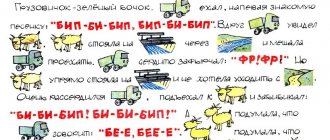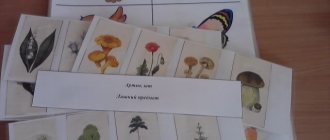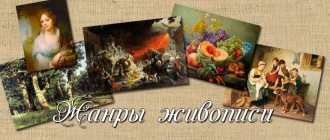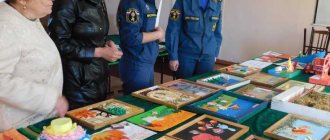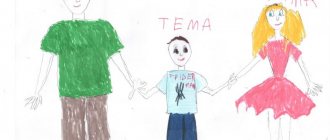The main goal pursued by plot pictures for composing a short story is the desire to develop the speech and thinking of children. Looking at the picture, the guys try to describe what is depicted on it, trying to compile a single, logically coherent story. Unfortunately, the speech of today's young people is far from perfect. Children and teenagers read and communicate little. Therefore, family, teachers, and all adults surrounding the child should pay attention to the development of correct literary speech. There are a huge number of ways to do this.
How can they be used?
One of them, already mentioned, is pictures for making a short story. On our website you will find story pictures for children. It is extremely important that the images are subordinated to a single theme, which means that the child, looking at them, will be able to compose a coherent message or play role-playing games for preschoolers. It is not for nothing that when teaching a foreign language, students are asked to describe a picture, come up with a dialogue according to the presented situation, and create role-playing games. This technique is also applicable when teaching the native language in a kindergarten or aesthetic center. You can download illustrations for writing a short story and print them for work.
The technique for developing speech based on pictures for composing a short story is simple. We advise parents to play role-playing games with their baby, lay out illustrations in front of him, and come up with a story together, a story in which the baby’s family or friends will be involved. Make sure that when describing, the child does not jump from one action or object to another, but expresses his thoughts consistently and logically. Having conducted such a lesson once, return to the worked picture after a while: ask the child if he remembers the story he compiled, what details he did not take into account, what he could add. A series of plot pictures for composing a short story are good for lessons on speech development in primary school, in native or foreign language lessons. Descriptions of illustrations, role-playing games, and a story based on them can be a good basis for creative work. Usually children respond with pleasure to such tasks, since children's imagination has not yet taken root, its flight is free and unhindered.
The method of working with pictures for children will require attention and regular practice from parents. It is the family that should be interested in the development of the baby. They should help him create a story, role-playing games for preschoolers, and then discuss them together.
A series of pictures for kindergarten or home use for children are focused on different topics. For example, you can compose a story on the topic “Family”, “Seasons”, “Forest”, “Home”, etc. The methodology for developing speech for children involves comprehensive coverage of topics on which a story can be compiled. The technique also involves the use of games for kindergarten, which will contain illustrations or a story on the chosen topic. As a result of a series of such activities, children begin to speak much more coherently, logically, and a single thread can be traced in their speech.
LiveInternetLiveInternet
STORIES IN PICTURES
A series of story paintings designed for children to independently compose stories.
Goal: to develop coherent monologue speech in children.
Tasks:
1. exercise children in examining and describing individual plot pictures with sequential action, and then compiling a complete story based on them under the guidance of the teacher; 2. strengthen children’s ability to coordinate nouns with adjectives and verbs. 3. teach children to guess what happened before and what will happen after regarding a given plot; 4. cultivate the ability to listen to others and complement the story heard; help you learn some rules of behavior.
Balloon.
The adult asks the child to arrange the story pictures in a logical sequence, answer the questions with complete answers and compose a story independently
1. Answer the questions: Who lost the balloon and where? Who found the ball on the field? What kind of mouse was he and what was his name? What was the mouse doing on the field? What did the mouse do with the ball? How did the ball game end? Come up with a continuation of this story. 2. Write a story.
Sample story "Balloon".
The story is not read to the child, but can be used as an aid in case of difficulties in composing a children's original story.
The girls picked cornflowers in the field and lost a balloon. The little mouse Mitka was running around the field. He was looking for sweet grains of oats, but instead of them he found a balloon in the grass. Mitka began to inflate the balloon. He blew and blew, and the ball became bigger and bigger until it turned into a huge red ball. A breeze blew, picked up Mitka with the ball and carried him over the field.
House for a caterpillar.
The adult asks the child to arrange the story pictures in a logical sequence, answer the questions with complete answers, and compose a story independently.
1. Answer the questions: Who are we going to write a story about? Tell me, what was the caterpillar like and what was its name? What did the caterpillar do in the summer? Where did the caterpillar crawl one day? What did you see there? What did the caterpillar do with the apple? Why did the caterpillar decide to stay in the apple? What did the caterpillar make in its new home? 2. Write a story.
Sample story "House for the Caterpillar."
The story is not read to the child, but can be used as an aid in case of difficulties in composing a children's original story.
Once upon a time there lived a young, green caterpillar. Her name was Nastya. She lived well in the summer: she climbed trees, feasted on leaves, and basked in the sun. But the caterpillar didn’t have a house and she dreamed of finding one. Once a caterpillar crawled onto an apple tree. She saw a big red apple and started gnawing on it. The apple was so tasty that the caterpillar did not notice how it had gnawed right through it. The caterpillar Nastya decided to stay and live in the apple. She felt warm and comfortable there. Soon the caterpillar made a window and a door in its home. It turned out to be a wonderful house
How a mouse painted a fence.
The adult asks the child to arrange the story pictures in a logical sequence, answer the questions with complete answers, and compose a story independently.
1. Answer the questions: Come up with a nickname for the mouse you will talk about in the story. What did the little mouse decide to do on his day off? What did the mouse buy in the store? Tell me what color the paint was in the buckets. What paint did the mouse use to paint the fence? What color paints did the mouse use to paint flowers and leaves on the fence? Come up with a continuation of this story. 2. Write a story.
Sample story “How a mouse painted a fence.”
The story is not read to the child, but can be used as an aid in case of difficulties in composing a children's original story.
On his day off, the mouse Proshka decided to paint the fence near his house. In the morning, Proshka went to the store and bought three buckets of paint from the store. I opened it and saw: in one bucket there was red paint, in the other there was orange paint, and in the third bucket there was green paint. The mouse Prosha took a brush and began to paint the fence with orange paint. When the fence was painted, the mouse dipped a brush in red paint and painted flowers. Prosha painted the leaves with green paint. When the work was done, the mouse's friends came to visit him to look at the new fence.
Good fishing.
The adult asks the child to arrange the story pictures in a logical sequence, answer the questions with complete answers, and compose a story independently.
1. Answer the questions: Who went fishing one summer? Come up with nicknames for the cat and dog. What did your friends take with them? Where did the friends go fishing? What do you think the cat started screaming when he saw that the float went under the water? Where did the cat throw the caught fish? Why did the cat decide to steal the fish that the dog caught? Tell me how the dog managed to catch the second fish. Do you think the cat and the dog still go fishing together? 2. Write a story.
Sample story “Good Fishing”.
The story is not read to the child, but can be used as an aid in case of difficulties in composing a children's original story.
One summer, the cat Timofey and the dog Polkan went fishing. The cat took the bucket, and the dog took the fishing rod. They sat down on the bank of the river and began to fish. The float went under water. Timofey began to shout loudly: “Fish, fish, pull, pull.” Polkan pulled out the fish, and the cat threw it into the bucket. The dog threw the fishing rod into the water for the second time, but this time he caught an old boot. Seeing the boot, Timofey decided not to share the fish with Polkan. The cat quickly picked up the bucket and ran home for lunch. And Polkan poured water out of his boot, and there was another fish there. Since then, the dog and cat have not gone fishing together.
Resourceful little mouse.
The adult asks the child to arrange the story pictures in a logical sequence, answer the questions with complete answers, and compose a story independently.
1. Answer the questions: Come up with a name for the girl, nicknames for the cat, and the mouse. Tell me who lived in the girl’s house. What did the girl pour into the cat's bowl? What did the cat do? Where did the mouse run out from and what did he see in the cat's bowl? What did the mouse do to drink milk? What was the cat surprised when she woke up? Come up with a continuation of this story. 2. Write a story.
Sample story "The Resourceful Mouse".
The story is not read to the child, but can be used as an aid in case of difficulties in composing a children's original story.
Natasha poured milk into a bowl for the cat Cherry. The cat lapped a little milk, put her ears on the pillow and fell asleep. At this time, the mouse Tishka ran out from behind the closet. He looked around and saw milk in the cat's bowl. The mouse wanted milk. He climbed onto a chair and pulled a long pasta out of the box. The mouse Tishka quietly crept up to the bowl, dipped the pasta in the milk and drank it. The cat Cherry heard the noise, jumped up and saw an empty bowl. The cat was surprised, and the mouse ran back behind the closet.
Bad walk.
The adult asks the child to arrange the story pictures in a logical sequence, answer the questions with complete answers, and compose a story independently.
1. Answer the questions: Name who you see in the picture. Come up with a name for the boy and a nickname for the dog. Where was the boy walking with his dog? What did the dog see and where did it run? Who flew out of the bright flower? What was the little bee doing in the flower? Why did the bee bite the dog? What happened to the dog after the bee sting? Tell me how the boy helped his dog? 2. Write a story.
Sample story “A Bad Walk.”
The story is not read to the child, but can be used as an aid in case of difficulties in composing a children's original story.
Stas and the dog Soyka were walking along the alley of the park. The jay saw a bright flower and ran to smell it. The dog touched the flower with its nose and it swayed. A small bee flew out of the flower. She was collecting sweet nectar. The bee got angry and bit the dog on the nose. The dog's nose was swollen and tears flowed from his eyes. The jay lowered its tail. Stas became worried. He took a bandage out of his bag and covered the dog’s nose with it. The pain has calmed down. The dog licked Stas on the cheek and wagged its tail. The friends hurried home.
Title: Stories in Pictures Series: Game “Fun in Pictures” Publisher: Vesna-design Year of publication: 2007
Source: https://detsad25.spb.ru/%D0%B8%D1%81%D1%82%D0%BE%D1%80%D0%B8%D0%B8-%D0%B2-%D0%BA %D0%B0%D1%80%D1%82%D0%B8%D0%BD%D0%BA%D0%B0%D1%85/
